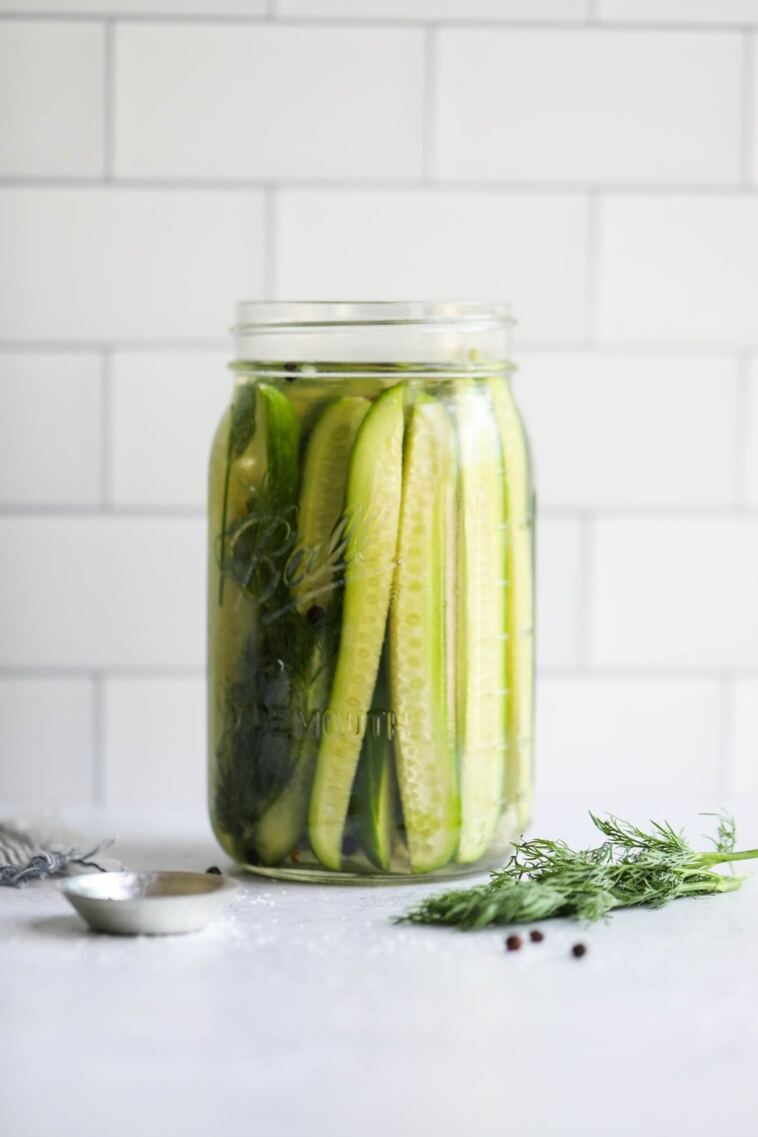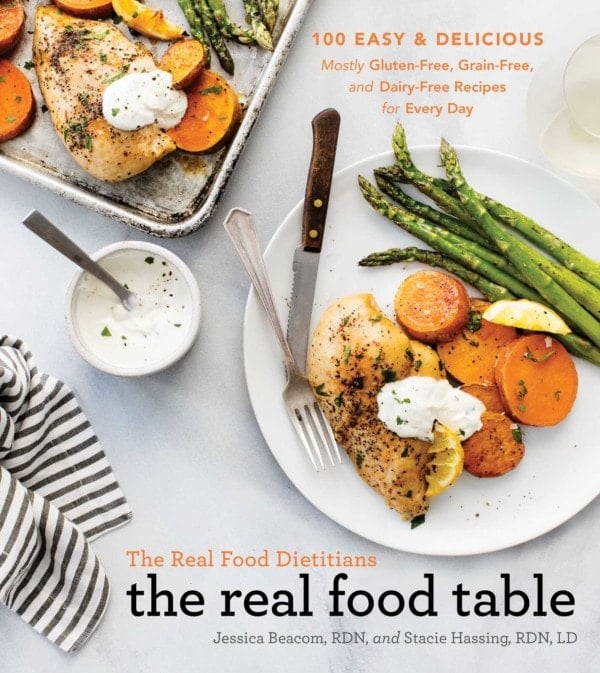- Like
- SHARE
- Digg
- Del
- Tumblr
- VKontakte
- Flattr
- Buffer
- Love This
- Save
- Odnoklassniki
- Meneame
- Blogger
- Amazon
- Yahoo Mail
- Gmail
- AOL
- Newsvine
- HackerNews
- Evernote
- MySpace
- Mail.ru
- Viadeo
- Line
- Comments
- Yummly
- SMS
- Viber
- Telegram
- JOIN
- Skype
- Facebook Messenger
- Kakao
- LiveJournal
- Yammer
- Edgar
- Fintel
- Mix
- Instapaper
- Copy Link
A cool, crunchy, and perfectly crisp pickle can elevate a burger or sandwich. Or if you’re like us, they can be the perfect snack right out of the jar. Taking a bite of a soggy, bland pickle can be a total letdown, but you don’t have to take that risk anymore.
If you want perfect homemade pickles every time, try making them at home with our Easy Refrigerator Pickles recipe. The recipe requires only 20 minutes of hands-on time and is naturally gluten-free. After 24 hours in the refrigerator, your pickles are ready to be enjoyed.
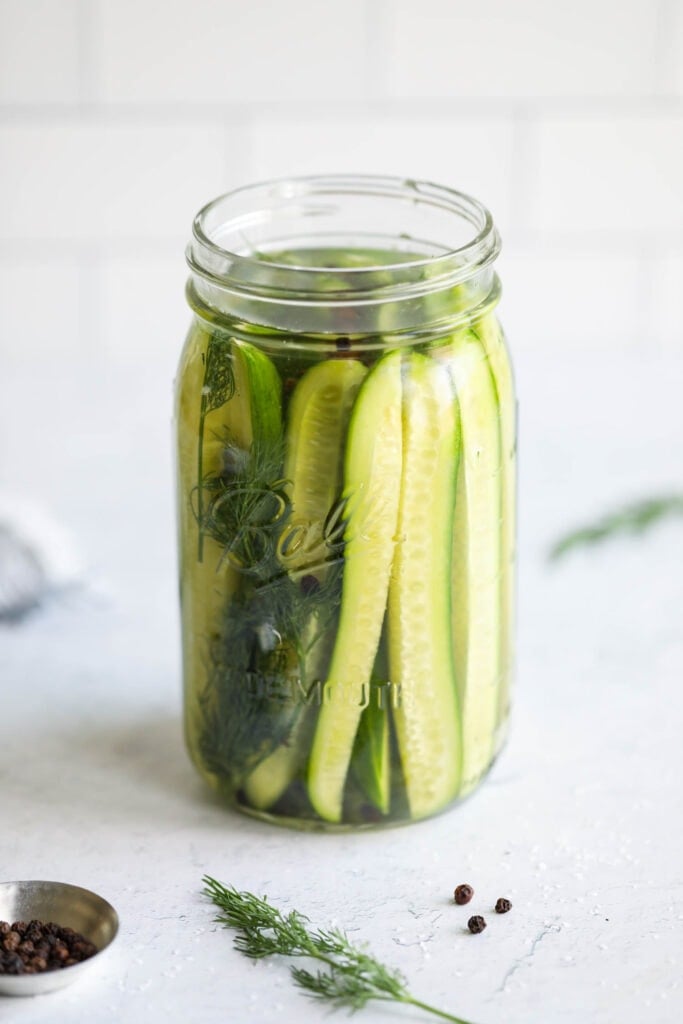
Why We Love These Pickles
Making your own pickles is so easy! With this recipe, you can use any clean jar, no canning necessary. There is no fermenting, which makes them a great option for a first time pickle project.
We like smaller varieties of cucumbers like Persian and Kirby because they almost never need trimming to fit into a quart-size jar. They also boast thinner skin with fewer seeds than regular slicing cucumbers.
Regular cucumbers and English cucumbers can still be used to make a killer refrigerator dill pickle! If you’re using slicing cucumbers, look for ones on the smaller side. These will have smaller and more tender seeds.
No matter which type of cucumber you choose, be sure to wash them well. Many are coated in a thin film of food-grade wax to prolong their shelf life. Also, make sure to cut the stems off, as they contain an enzyme that can soften the cuke.
Fermented Pickles vs. Quick Pickles
This recipe uses a method of pickling cucumbers called quick pickling, or refrigerator pickling. You make it by pouring the hot pickle brine over the cucumbers (or any other fresh produce, even beets and green beans).
What is pickling solution? Pickling solution is actually a type of metal treatment to remove surface impurities and oxidation. This solution is not related to refrigerator pickling liquid and should not be confused with pickle brine.
What is the best way to make pickles? We think the best way to make pickles is the quick pickle method, but that’s because we love pickles and can be a bit impatient! The prep time for these pickles is minimal and within a day you’ll have a great low-cal snack.
You can pickle other veggies this way, too, like red onions or carrots. Pickled veggies make a great side dish for meal prep because they’re so quick and simple to make.
Fermented pickles take much longer to process than quick pickles. Kosher dill pickles are an example of fermented pickles.
To make fermented pickles, you combine sea salt or pickling salt and water and spices to make a brine. This gets poured over the cukes in a jar where they must be weighted down, and stored in a dark place at room temperature or slightly cooler.
These pickles get their tang from the good bacteria that grow during the lacto fermentation process. Fermenting takes much longer. Depending on the temperature of storage, it can take 3-6 weeks. However, fermented pickles offer probiotic benefits like sauerkraut and kimchi. If you’d like to try your hand at fermentation, we suggest trying out these recipes:
- Easy Fermented Carrots with Dill
- Homemade Sauerkraut (includes photo tutorial)
- Preserved Lemons
Tip!
Canning fermented pickles in a water bath will not only make your pickles softer, but the heat will kill the probiotic microbes, too. Fermented pickles will keep in the refrigerator for several months.
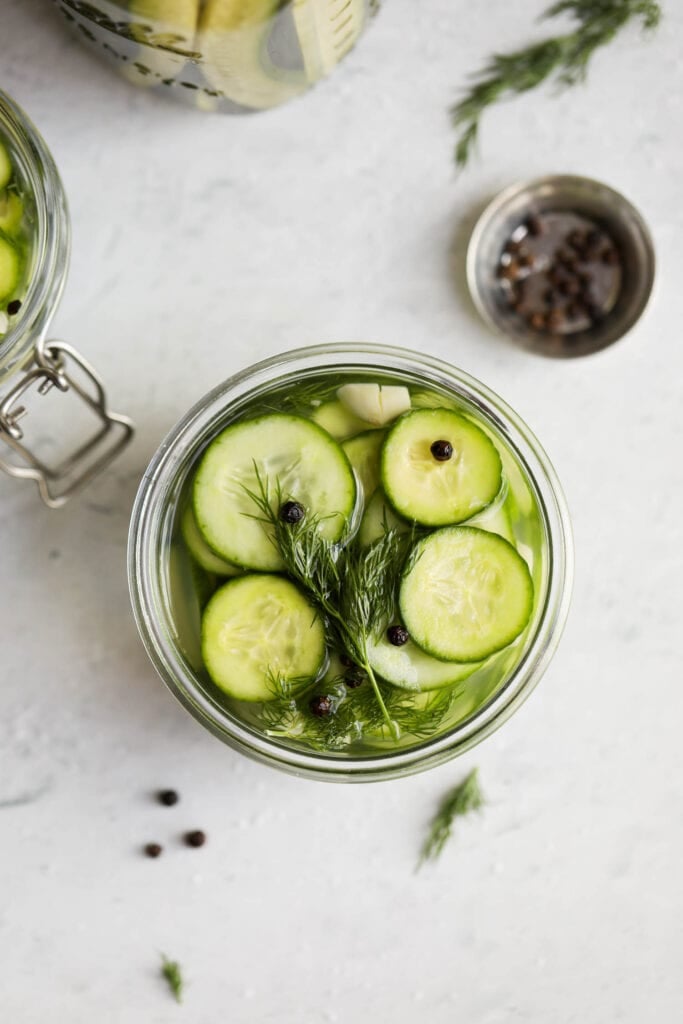
Health Benefits of Pickles
Quick pickling is not only faster than fermenting, but it also helps preserve the nutrients in your veggies. Pickling produce from your garden or farmers’ market allows you to capture the nutritional benefits at peak ripeness.
When you pickle cucumbers, you get a yummy snack with a boost of vitamin K, vitamin C, vitamin A, and potassium.
Can I just throw cucumbers in pickle juice? Yes, you can throw cucumbers into pickle juice, but results may vary. For this reason, we prefer to make our brine. That way, we control the sodium content and know there are no artificial preservatives or coloring in our pickles.
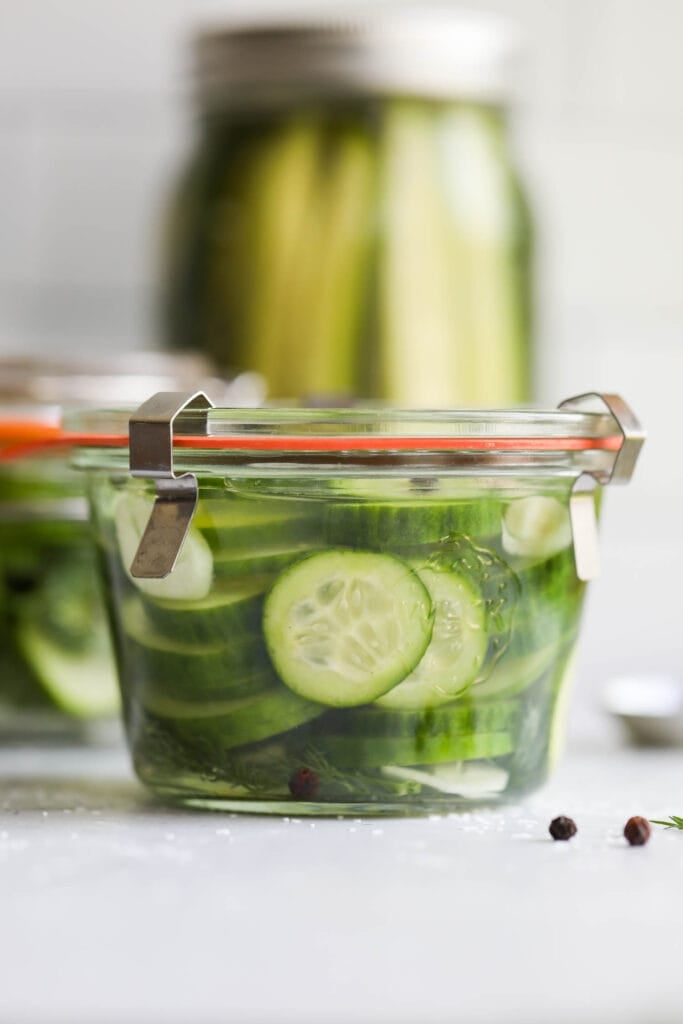
Ingredients To Make Refrigerator Pickles
This is the best pickle recipe because you probably have most of it in your kitchen already, even if you’ve never made pickles. It all comes together with a handful of ingredients and one cup of water.
- Cucumbers – Kirby cucumbers or Persian cucumbers work best for refrigerator pickles because of their small size and their very tiny seeds
- Water
- Vinegar – No need to make a run to the grocery store for apple cider vinegar! The distilled white vinegar you probably have in your pantry right now will give your refrigerator dill pickles their classic tang.
- Kosher salt – Kosher salt grains are larger than ordinary fine salt or table salt. They also do not contain iodine. Coarse sea salt can be used 1:1 for kosher salt, but if all you have is fine sea salt, you’ll need to decrease the amount you use (see recipe below)
- Cane sugar – The small amount of sugar added to this refrigerator pickles recipe is strictly for flavor, not function. Sugar helps balance or offset some of the tartness of the vinegar. It is completely optional, so feel free to leave it out for a Whole30-compatible or sugar-free option if you’d like. If you like bread and butter pickles, adding more sugar will give you sweeter pickles.
- Garlic – Fresh cloves of garlic will give you the best results (as opposed to dried or granulated garlic). We call for 2-3 cloves in the recipe below to give you some flexibility depending on how large your cloves are and how garlicky you’d like your easy homemade pickles to be.
- Peppercorns – Black peppercorns are specified in the recipe, but pink or green would also work. Mustard seeds can also be used for an added zing to your jar of pickles.
- Fresh dill – You can’t have a dill pickle without dill! Be careful using dill seed; it does not impart the same flavor that fresh dill or dried dill weed gives to dill pickles.
These are the ingredients we use, but you are free to experiment and find what works best for you.
Make spicy pickles with some jalapeno slices or red pepper flakes. You can pick up a jar of pickling spice or create your own blend with bay leaves, coriander seeds, and maybe even some clove.
How To Make Refrigerator Pickles
It’s time for you to DIY a batch of refrigerator dill pickles! We think you’ll be pleasantly surprised at just how simple these are to make. Warning: You may never go back to store-bought pickles again after this easy recipe.
Step 1: Make the brine by combining the vinegar, salt, and sugar (if using) in a small saucepan over medium-high heat. Bring the mixture to a simmer. Stir until the salt and sugar are completely dissolved. Remove the pan from the heat. Stir in the peppercorns and water. Set aside.
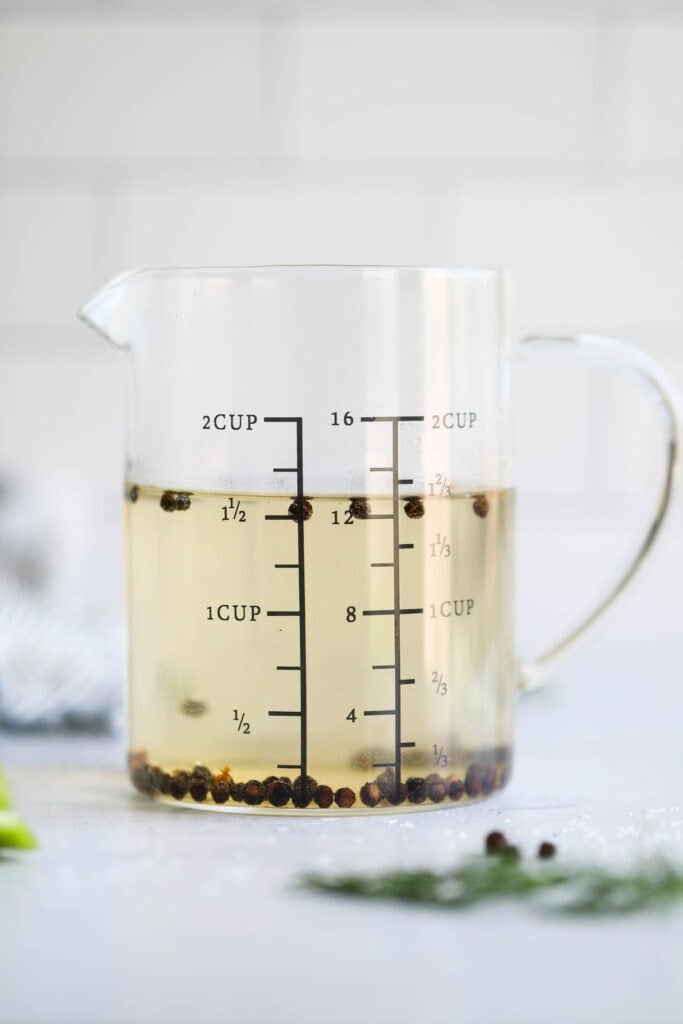
Step 2: Using a large knife, cut the cucumbers into spears or slices. Whichever you decide to do, try to keep them relatively similar in size and thickness for best results.
Step 3: Peel and slice the garlic. Add the garlic and dill to a clean wide-mouth jar with a lid. A wide-mouth quart-size mason jar or flip-top canning jar work great with this refrigerator dill pickle recipe, but you can use any clean jar.
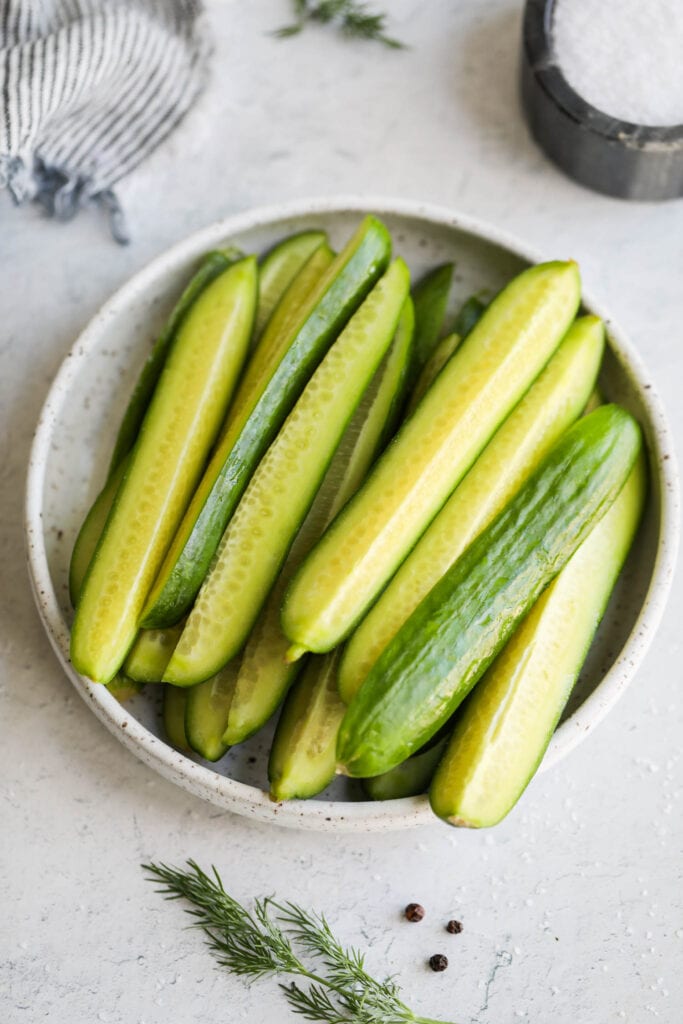
Step 4: Add the sliced cucumbers to the jar. If you’re making pickle spears, arrange them standing upright in the jar. However, if you’re making pickle chips or slices, layer them in the jar arranging them so that they all fit and will have a little room at the top for the brine. If using pint jars, just split the garlic, dill, and cucumbers between two jars.
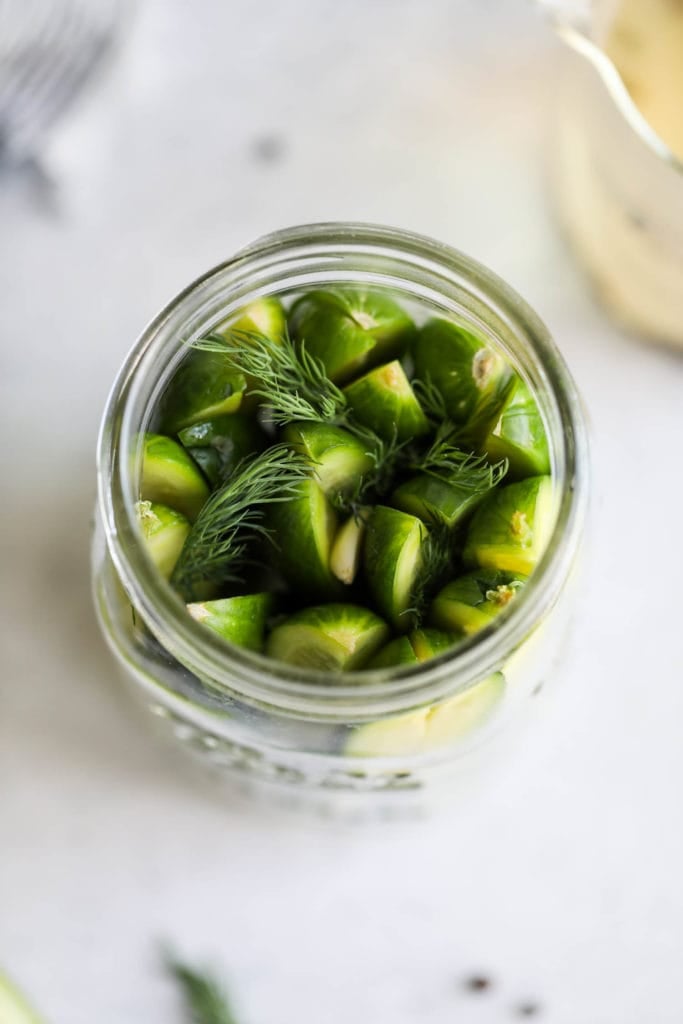
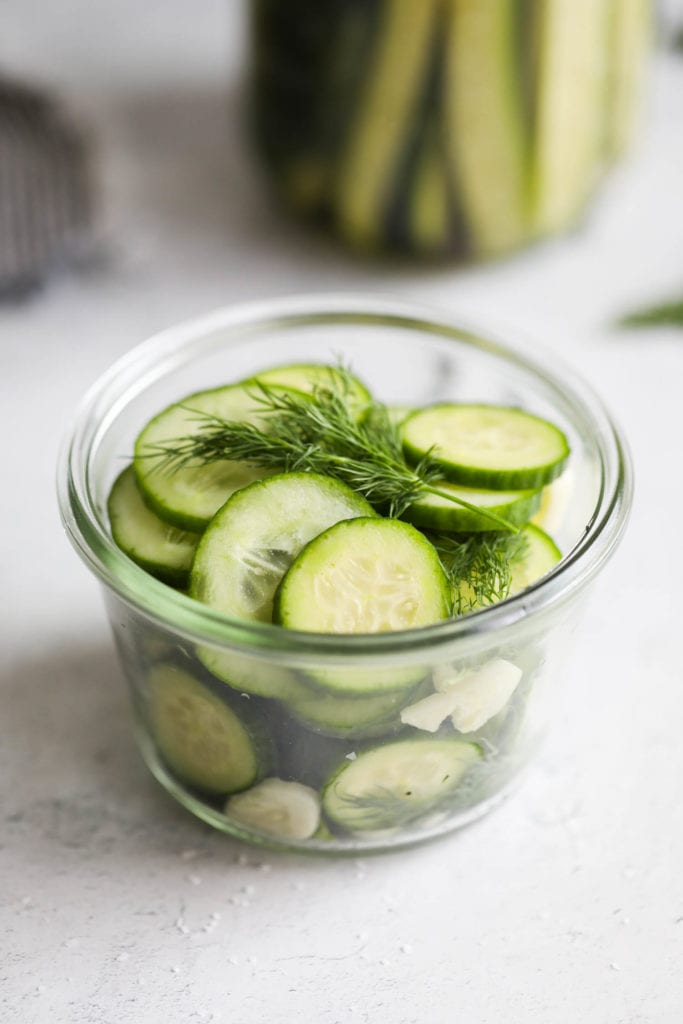
Step 5: Pour the brine over the cucumbers in the jar and cover with the lid. Refrigerate for 24 hours before serving.
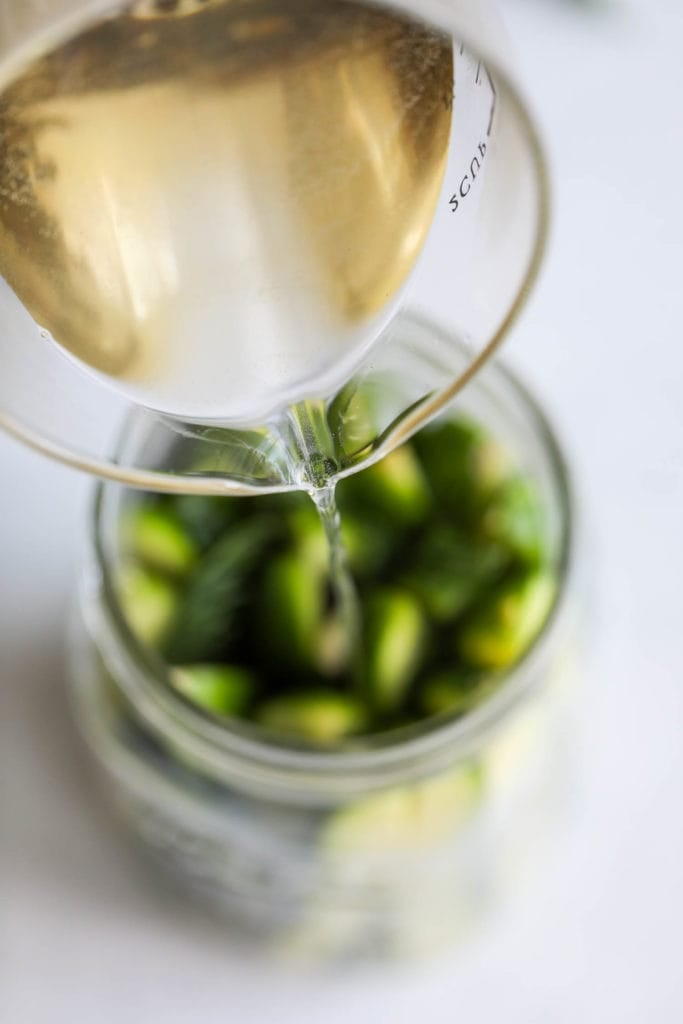
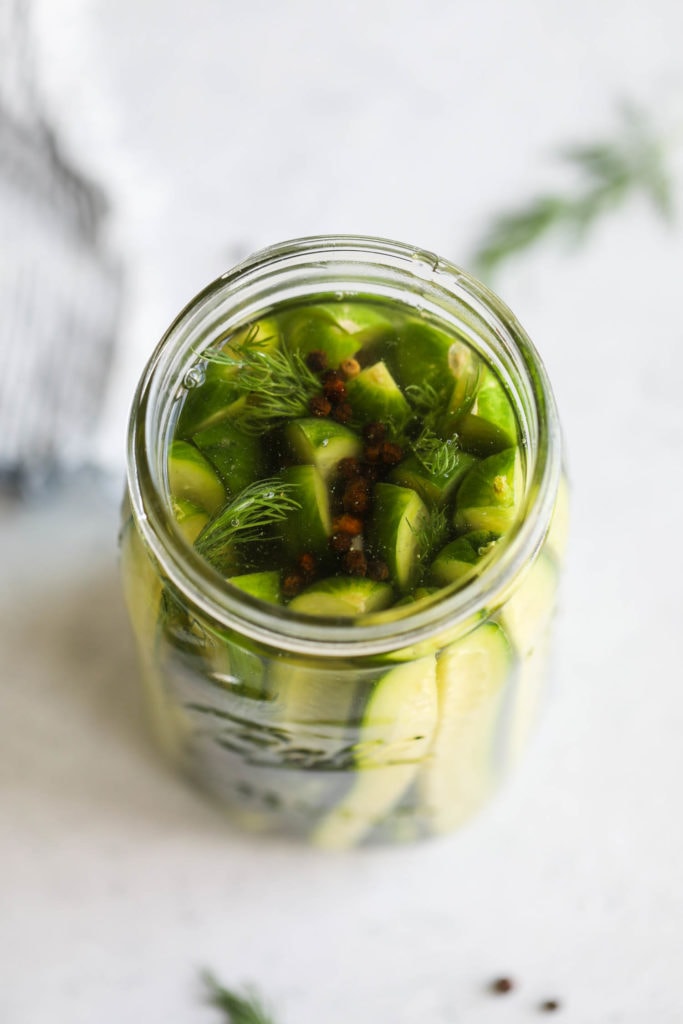
For serving size and the complete directions and ingredient amounts, scroll down to the recipe card below. All of our recipes include the nutrition analysis, listing calories (kcals), protein, carbohydrates, fiber, sugar, sodium, cholesterol, and more per serving.
Leave out the teaspoon of sugar called for in this recipe to make it Whole30. We’ve added just a tiny bit of sugar to the recipe to help balance some of the acidity of the white vinegar, but it’s not required.
You can still make a very tasty batch of pickles that are perfect for topping your next Burger Bowl with Special Sauce. You can also serve it with a 5-Minute Salmon Salad when you’re short on time but need a hearty and satisfying lunch.
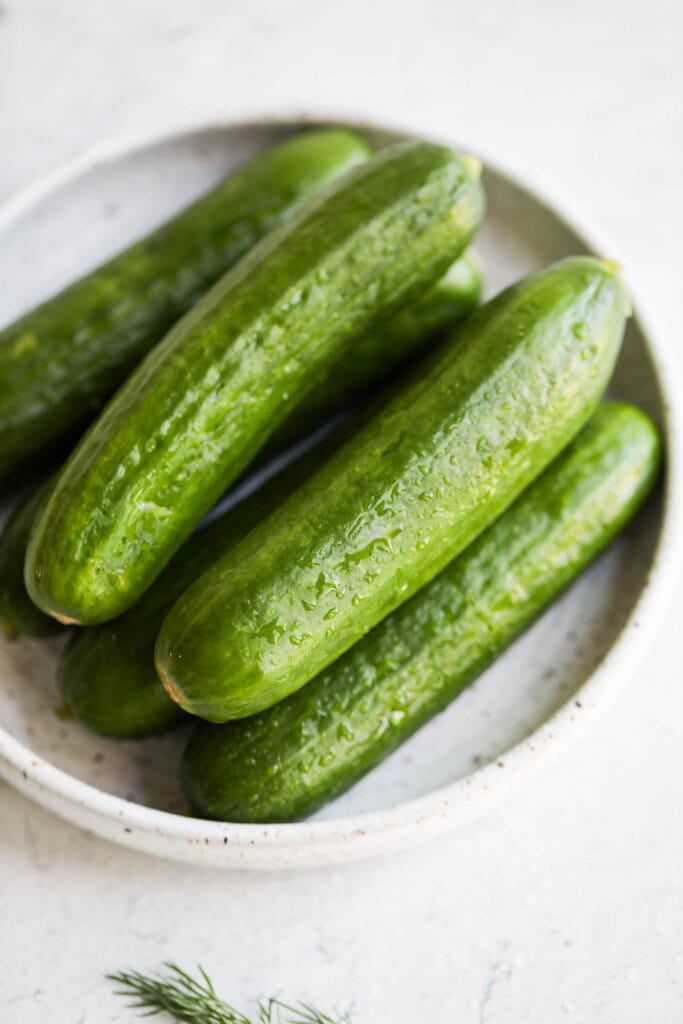
FAQ’s
Frequently Asked Questions
How long do quick pickles last?
Quick refrigerator pickles will keep in the refrigerator for up to one month. They may lose a bit of their crunch over time, but they’ll still be delicious and safe to eat.
Since they are so easy and keep for a while, you might want to consider making a double batch. It will barely increase the total time for the recipe. That way you can always have some on hand or you can share the love with a friend.
Can refrigerator pickles be canned for longer storage?
We do not recommend water-bath canning these quick pickles. There is not enough vinegar in the recipe to create the low pH that is required to safely can them.
What is the nutritional value of a pickle?
Dill pickles are considered a low-calorie and low-carbohydrate food with just 20 calories and 4 grams of carbs per ¼ cup serving. They are rich in sodium and a good source of potassium.
Can I make these pickles sugar-free or Whole30-compatible?
Yes, simply omit the 1 teaspoon of sugar from the recipe.
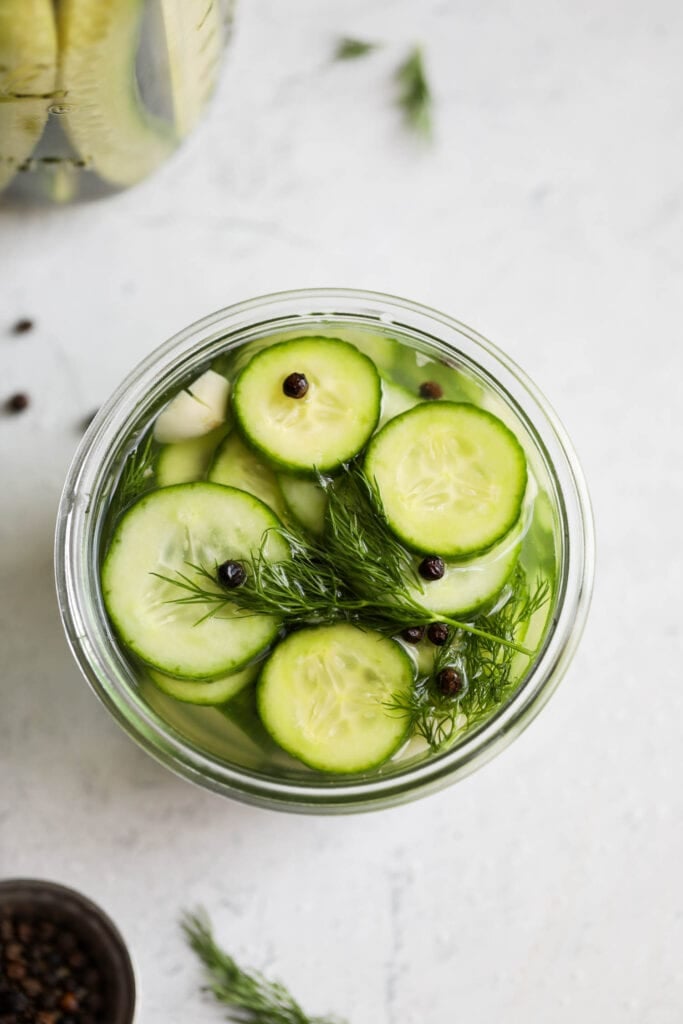
Servings: Makes 1 quart 1x
- Make the brine.
- Place a small saucepan over medium-high heat.
- Add vinegar, salt, and sugar (if using). Stir.
- Heat the mixture, stirring occasionally, just until the salt and sugar are completely dissolved.
- Remove the pan from heat. Stir in peppercorns and water.
- Set aside or transfer to a jar with a tight-fitting lid and refrigerate until ready to use (up to 4 days).
- Prep the pickles.
- Wash the cucumbers and pat dry.
- Using a knife, slice the cucumbers lengthwise into spears (or slice into ¼-inch thick rounds for pickle chips).
- Add the garlic and dill to the bottom of a wide-mouth quart-size mason jar. Then, add the cucumber spears or slices to the jar.
- Pour the brine over the cucumbers. It should cover them completely, but if not, add a bit of cold water to the top until they are covered.
- Place the lid on the jar and refrigerate for 24 hours. Pickles will keep in the refrigerator for up to 1 month.
Last Step! Please leave a review and rating letting us know how you liked this recipe! This helps our business thrive so we can continue providing free recipes and high-quality content for you.
Notes
According to National Center for Home Food Preservation, you should cut a 1/16-inch slice from the blossom/stem end of fresh cucumbers. Blossoms may contain an enzyme that causes excessive softening of pickles.
Nutrition Information
- Serving Size: Per spear
- Calories: 3
- Fat: 0 g
- (Sat Fat: 0 g)
- Sodium: 140 mg
- Carbohydrate: 1 g
- (Fiber: 0 g
- Sugar: 0 g)
- Protein: 0 g
- Cholesterol: 0 mg
Dietary
© The Real Food Dietitians
Pin now To Make it later!
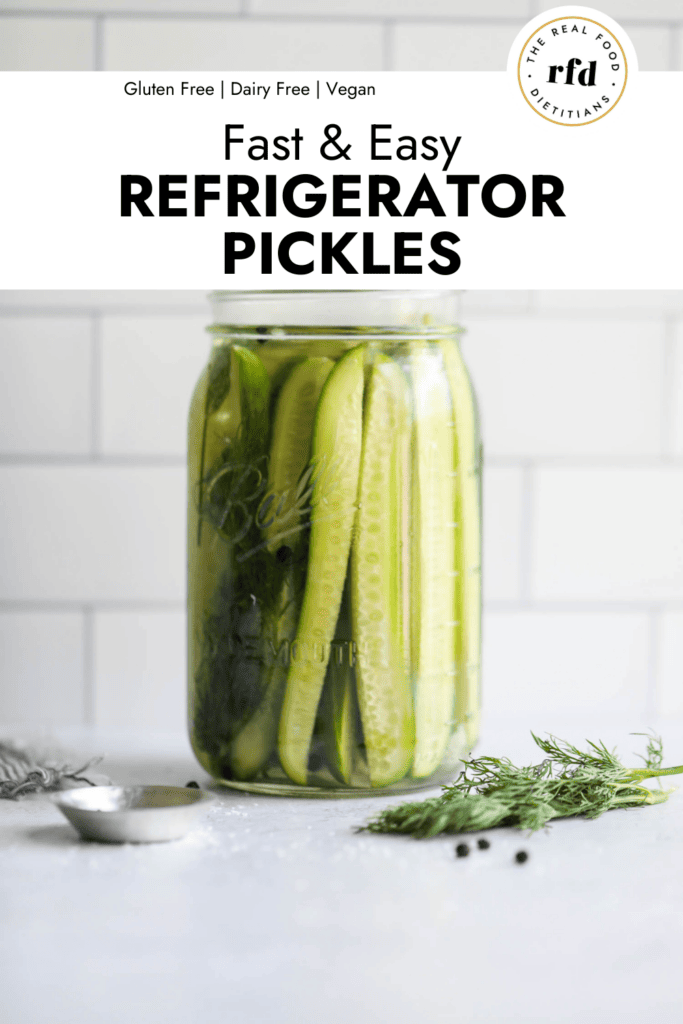
For ultimate success, we highly recommend reading the tips in the full blog post above. All photos and content are copyright protected. Please do not use our photos without prior written permission. If you wish to republish a recipe, please rewrite the recipe in your own unique words. Link back to the source recipe here on The Real Food Dietitians. Thank you!
